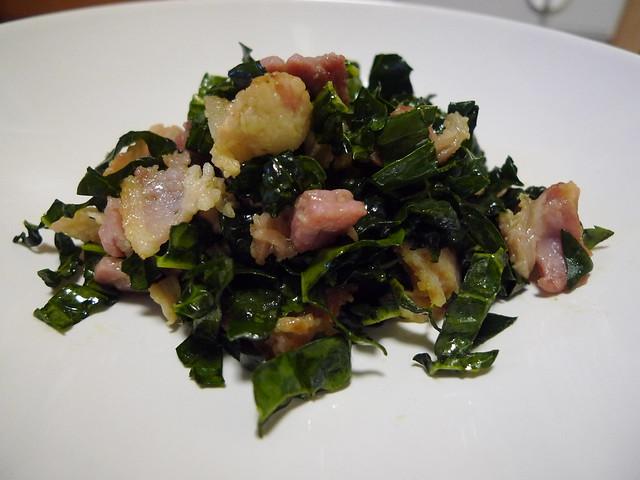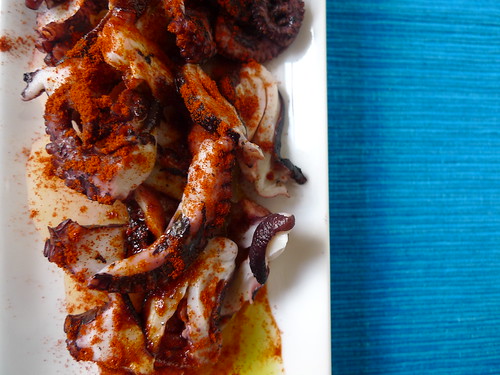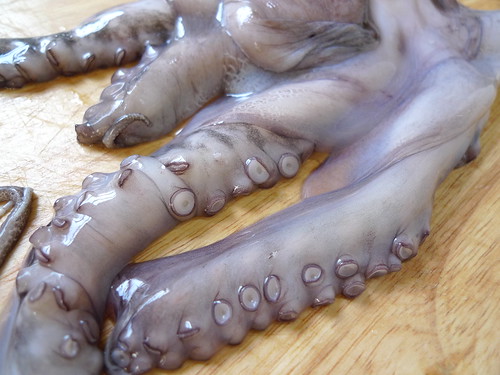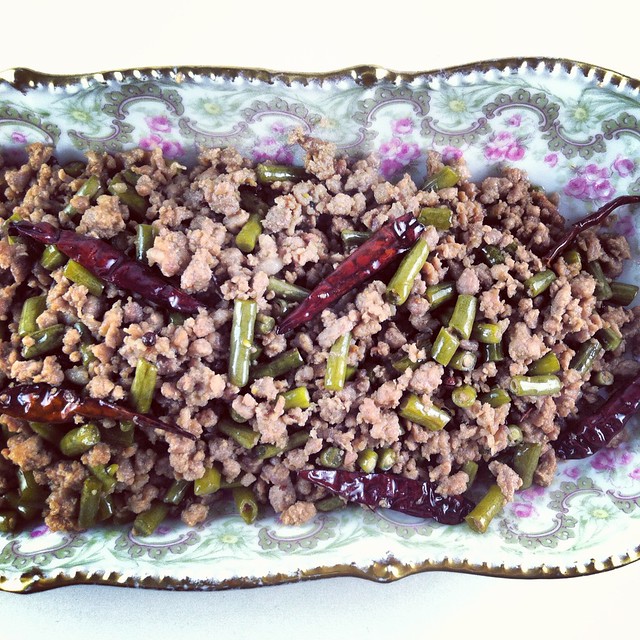I saw a bunch of lacinato kale at the market and I immediately thought of the delicious salad I had at Lupa over the holiday season. At the time, I didn’t know there were other kinds of kale because I’ve only seen the curly ones in Harlem. It turns out kale is classified by leaf type and lacinato is also known as black cabbage. It’s crispier and can be eaten raw, where as the curly ones need to be cooked down or else the leaves are too tough to chew.
The Lupa salad used guanciale, or unsmoked pig’s cheeks. I made do with a slab of bacon sliced thinly because I didn’t want to spend too much money after paying only $2.99 for the bunch of kale. The kale was also roasted but I left that out here to make the recipe even more simple. This might not be hefty to be its own course, but it sure was a good starter.
Ingredients:
1 small bunch lacinato kale, washed, leaves torn from hard stalks, chiffonade
6 to 8 strips of bacon, chopped
juice from 1 lemon1. In a skillet, render some fat by frying the bacon. Cook until bacon pieces are brown and slightly crispy. Remove from pan using a slotted spoon. Set the fat aside.
2. Put the kale leaves in a big bowl and toss them with lemon juice using your hands.
3. To serve, put a handful of kale on each person’s plate. Sprinkle with bacon and drizzle with some of the fat for extra moisture.
Related post/s:
Cook down kale and they’re good with sundried tomatoes
Kale as a dessert? You bet!







